The Fiery Mountains Under The Sea
12:05 minutes
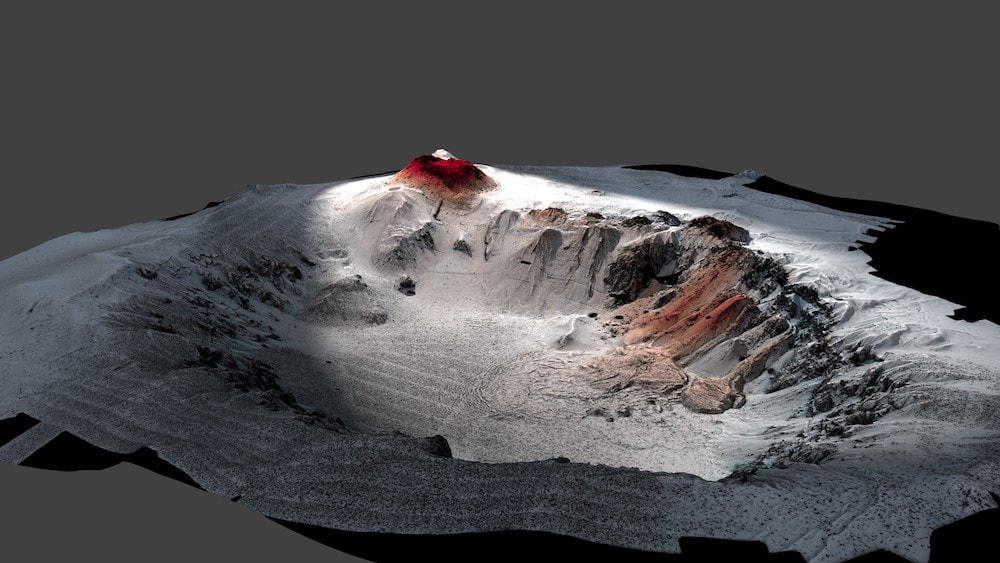
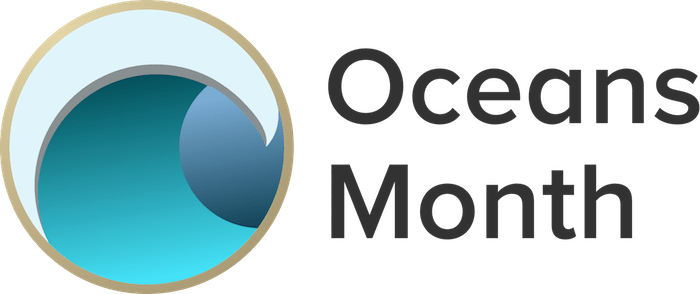 This story has been resurfaced as a part of Oceans Month, where we explore the science throughout the world’s oceans and meet the people who study them. Want to dive in with us? Find all of our stories here.
This story has been resurfaced as a part of Oceans Month, where we explore the science throughout the world’s oceans and meet the people who study them. Want to dive in with us? Find all of our stories here.
In July 2012, a passenger in a commercial airplane flying across the Pacific happened to look down at exactly the right moment. From the window, they saw a gray mass floating on the surface of the ocean. It was something that many wouldn’t give a second thought.
But the mass turned out to be a giant pumice raft roughly the size of Philadelphia—a product of an eruption from an underwater volcano. The Havre volcano off the coast off New Zealand is one of over 10,000 submarine volcanoes in the world—and that’s not counting the mid-ocean ridge, an underwater mountain system and hotbed of volcanic activity. In fact, “most of the volcanism on our planet occurs in the oceans, but we know so little about it,” says Adam Soule, Chief Scientist for Deep Submergence with the Woods Hole Oceanographic Institution, in a phone call to Science Friday. He’s part of the University of Tasmania and WHOI team that studied the Havre eruption.
[The Science Friday Book Club is back!]
“The ocean is this sort of veil that we can’t really see through,” says Soule. He notes that the number of terrestrial volcanoes documented is somewhere in the thousands. For underwater volcanoes—where an estimated 70 percent of all volcanic activity occurs—that number is in the tens.
Why the discrepancy? Part of it has to do with the “serendipitous” ways that we discover submarine volcanoes, Soule says. Researchers typically rely on satellites to spot volcano hotspots on land, and use seismometers to detect earthquakes associated with eruptions—methods that don’t work underwater. “An airplane flying over a pumice raft has probably happened a thousand times before this particular case where someone noticed it and got in touch with the right people,” says Soule.

The challenges don’t stop at detection. While this particular pumice raft was spotted in 2012, researchers weren’t able to make it to the site until 2015. Delays in research are never ideal, but they pose a particular challenge when materials are prone to floating away—pumice, even when produced thousands of meters beneath the oceans, is still buoyant.
“Once [these materials] are at the sea surface, they can float for a really long time—years and maybe even a decade or more,” says Soule. “They washed up on shore in Australia and people were finding them.”
While most of the material had floated away by the time researchers arrived at the Havre site, the residue still indicates this was no small eruption. In fact, researchers estimate that the eruption was about 1.5 times larger than the eruption of Mount St. Helens in 1980. It produced more than a cubic kilometer of material, an estimated 75 percent of which floated away.
[The surprising life inside frozen soil.]
Soule argues that we need to find better ways of monitoring these underwater volcanoes, and more efficient means of getting to sites.
“There’s this huge and vast region of the earth’s mantle that dwarfs every other part of the planet,” he says. “But it’s hard to get too excited because you don’t really see it. But a volcano is a place where you kind of see the earth breathing.”
Soule joins Ira to discuss the Havre eruption, and the challenges facing researchers who study underwater eruptions. Dive beneath the surface for more images from the Havre below.
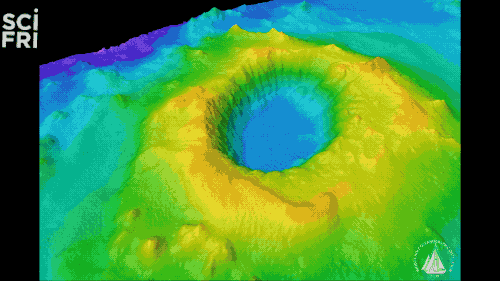
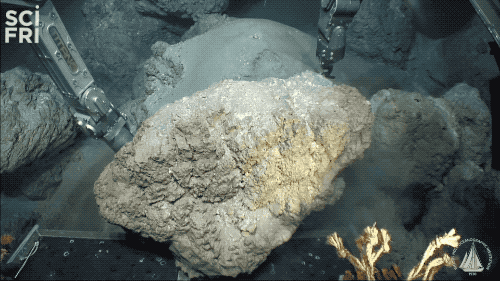
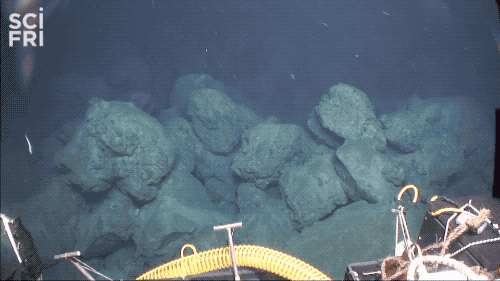
Invest in quality science journalism by making a donation to Science Friday.
Adam Soule is Chief Scientist for Deep Submergence at the Woods Hole Oceanographic Institution in Woods Hole, Massachusetts.
IRA FLATOW: This is Science Friday. I’m Ira Flatow, lots of stuff to talk about this hour. A bit later. We’ll evaluate the science behind sleep tracking apps and gadgets, and how the brain can be hacked with flashes of light to combat jet lag. First up though, has this ever happened to you? You’re sitting on a plane traveling over a large piece of open ocean, you look out the window, and you see something– something weird down there. It’s long and narrow, it stretches for miles, well, like it’s an island, and this one is gray colored like a cluster of rocks floating in the water. What would you do if you saw that?
Well, most people I’d say would go back to reading their Kindle or watching the in-flight movie, but in 2012, someone thought, hey, that’s weird I should tell someone, and that kicked off an expedition to the southwest Pacific Ocean where researchers would find out it was floating pumice expelled from an underwater volcano, one of tens of thousands of volcanoes under the sea. And here to talk about it with me, and tell us all about it, is Adam Sule. He’s chief scientist for deep submergence at Woods Hole Oceanographic Institute in Massachusetts. Adam, welcome to Science Friday.
ADAM SOULE: Thanks, Ira. It’s great to be here.
IRA FLATOW: Let’s start about just how incredible it is that someone saw this from an airplane and thought to say something to the right people? I would have thought someone– hey, someone already knows about this. Who am I going to tell?
ADAM SOULE: Yeah. It’s amazing. I mean, you mentioned there’s thousands of volcanoes in the ocean, there are erupting all the time, but we only find out about them through kind of serendipitous events like this, and we’re very appreciative of the woman who noticed this, and let people know, because it kicked off for us a really exciting expedition.
IRA FLATOW: Do you get a lot of eruptions reported that way? Or is this something unusual?
ADAM SOULE: It’s pretty unusual. You know, over the last 100 years or so, there’s been about 3,000 eruptions on land that have been documented. In the oceans, there’s only been about 30. So it’s really a rare event when we find out an eruption happened, and can get out there right away to look at it.
IRA FLATOW: So give us an idea of how you got this big pumice raft story. What did it look like? How big was it?
ADAM SOULE: The pumice raft was, based on satellite imagery that we looked at after the fact, the pumice raft was about 400 square kilometers. And that, for reference is about the area of New Orleans or Denver. So this is a massive body of pumice floating in the ocean.
IRA FLATOW: And so the eruption happened in 2012, but you’re not able to get out there to study it until 2015. First, why is there such a long delay? And did you miss it?
ADAM SOULE: You know, it takes a while to mount an expedition of this nature. It requires proposals to funding agencies, and we were very fortunate that the National Science Foundation supported this work, but you also have to get a ship and deep submergence vehicles together and a whole crew of scientists. And even though it took three years to get out there, it was still fantastic. To be able to see the deposits from this eruption, and to know that they came from this particular event is something we don’t often get to do in the deep ocean.
IRA FLATOW: Were you able to actually go down and study the volcano itself?
ADAM SOULE: Yeah. We had on board with us a remotely operated vehicle called Jason, and an autonomous robotic vehicle called Century. Those are operated here out of Woods Hole, and with them, we were able to make really detailed maps of the sea floor, and then go down with a robotic vehicle that was our eyes and hands for lack of a better word, controlled from the ship, to see what’s down there and pick up the samples.
IRA FLATOW: Does a submarine volcano look like one that you see on land?
ADAM SOULE: Oh, remarkably similar. So when we created these detailed maps of the volcano, I kind of put them next to photos of some aerial volcanoes, or volcanoes on land, and literally, you cannot tell the difference. They look almost identical, some of the landforms that are produced.
IRA FLATOW: You know, because we see eruptions in Hawaii all the time, but you know you never hear about these underwater eruptions until somebody sees something unusual.
ADAM SOULE: Yeah, that’s right. Most of the volcanism, about 75% of the Earth’s volcanism happens under water, but we don’t really have a great ability at this time to detect when those eruptions occur, and even less so to see them in action.
IRA FLATOW: So how many do you think? I said tens of thousands. Is that being too big a number?
ADAM SOULE: Oh, no, no, I think that’s totally reasonable. I mean, there’s a 65,000 mile long chain of volcanoes on the global mid-ocean ridge that we’ve visited probably 1% to 2% of it.
IRA FLATOW: And why don’t we come up with some better way then of monitoring these submarine volcanoes? Is that just a question of money and putting down monitoring devices, satellites? What’s the story here on that?
ADAM SOULE: Well, I think it’s a question of technology, but I think the technology has caught up, and maybe it’s a question of will. We have satellites above the Earth monitoring it, and we use those to understand weather and to do all sorts of amazing monitoring of our planet, and I think we have a growing recognition that the oceans are equally as important. So I think the technology exists, and it’s a matter of finding the will and the resources to monitor the oceans in the same way.
IRA FLATOW: Now I mentioned a couple of earthly, meaning on the ground volcanoes by name. Do all the volcanoes under water have names too?
ADAM SOULE: You know, a lot of them have names, but as you mentioned, there are thousands of them, and many of them don’t have a name, and many of them have not been discovered even.
IRA FLATOW: And this one has a name?
ADAM SOULE: This one has a name. Yeah, it’s Havre Volcano, and it’s part of a string of volcanoes that run to the Northeast from New Zealand called the Kermadec Arc. There’s about 30 or so volcanoes in a line between New Zealand and Fiji, and this is one of those. Some of those reach all the way to the sea surface and make islands, but most of them are down at 500 to 2000 meters below the sea surface.
IRA FLATOW: So how tall would this volcano be underwater?
ADAM SOULE: This volcano, it’s summit is at about 700 meters below the sea surface. Its base is around 1,500 to 2,000 meters. So the volcano itself stands a kilometer high, and it looks just like a volcano that you’d see on land, but no one ever gets a chance to see it in the same way.
IRA FLATOW: We’re looking on their web site. There’s a photo of the volcano. Now when this giant raft of pumice is floating, how much of the volcanic junk coming out of it, the magma coming out, winds up floating, and how much winds up going down the cone of the volcano?
ADAM SOULE: Yeah, so one of the fascinating things we learned about this eruption is that about 75% to 80% of the material that came out during the eruption went up into that pumice raft, and it floated away from the volcano. So the stuff that was deposited on the volcano is only a small fraction of the material that came out. So when you look back at rock record from kind of old eruptions, you’re going to have a really skewed view of how large these eruptions can be.
IRA FLATOW: We have a couple of questions that came in, it’s sort of the same question. If you name this volcano, would the woman who saw it, would she be responsible for the name? Like discoverers see things. You name it after the discoverer.
ADAM SOULE: Yeah, there’s a bunch of strange names for seafloor features. There’s actually a process to officially name it through a organization called Jebco, but a lot of names are just produced on the fly when folks are out at sea and they stick around. So there’s volcanoes named after Norse gods and after people’s pets and kids. I would hope that in this case the woman who saw it would get a chance to name it.
IRA FLATOW: One vote for her. Now when the pumice comes up in these giant mass, do you think that a lot of people have seen this before from other volcanic undersea eruptions, but just never knew what it was, and never reported them?
ADAM SOULE: Yeah. I think that– I mean, in that part of the world where these eruptions happen a little more frequently, people find pumice washing up on the beach all the time. So the pumice from this eruption was being found years after the actual event. So there’s all sorts of evidence for these eruptions, but it takes kind of a special circumstance to see it right when it’s coming up, as this woman did.
IRA FLATOW: If you go to your beach, I mean, obviously, this is floating. Could this float all the way across the Pacific to Hawaii and maybe the west coast an beyond.
ADAM SOULE: Sure. It’s possible, depending on the currents. What’s interesting is that a lot of the pumice will eventually sink because it gets colonized by kind of organisms, biological organisms, and in some cases, these floating pumice can act as vectors for moving organisms from one part of the ocean to the other.
IRA FLATOW: So sort of a microbiome develops inside the pumice.
ADAM SOULE: Yeah, and not so micro. There’s barnacles, there’s starfish. There’s all sorts of things that end up clinging to this tiny floating island that is working its way across the ocean surface.
IRA FLATOW: How did the discovery actually reach you people? How did she know who to talk to?
ADAM SOULE: Well, you know, that part of the story, I’m not too clear on, but she had read a scientific paper about pumice floating in the oceans, and she got in touch with the author of that paper, and he got in touch with the New Zealand Navy, that happened to have a ship in the area to confirm the sighting.
IRA FLATOW: So we don’t know who she is. Is her name on a paper somewhere?
ADAM SOULE: Yeah, her name is– no, her name’s not on the paper, but we do know who she is. Her name is Maggie deGras. She’s a resident of New Zealand, and was flying from Apia to New Zealand when she saw this.
IRA FLATOW: She’s probably a Science Friday listener, I think. An international listener.
ADAM SOULE: Absolutely. If she’s listening to this, I’d love to hear from her.
IRA FLATOW: So how do you top this one? What’s your most exciting next thing on your list?
ADAM SOULE: Oh my gosh. You know, the thing about working in the deep ocean and on volcanoes in particular is that we know so little about them that every time we have a chance to go out there, we get to make exciting discoveries. And a place that I’m heading this year is the mid-Atlantic ridge, where we actually find rocks on the sea floor that are lava that are so bubbly that when you bring them up, they start popping. And that’s a really cool thing to see.
IRA FLATOW: I can’t top that, Adam. Great way to end that segment. Adam Sule, chief scientist for deep submergence at Woods Hole, the famous Woods Hole Oceanographic Institute. Thank you for taking time to be with us today.
ADAM SOULE: It was great to be here. Thanks, Ira.
IRA FLATOW: And we do have some cool images of that volcano on our website at sciencefriday.com/volcano.
Copyright © 2018 Science Friday Initiative. All rights reserved. Science Friday transcripts are produced on a tight deadline by 3Play Media. Fidelity to the original aired/published audio or video file might vary, and text might be updated or amended in the future. For the authoritative record of Science Friday’s programming, please visit the original aired/published recording. For terms of use and more information, visit our policies pages at http://www.sciencefriday.com/about/policies/
Katie Feather is a former SciFri producer and the proud mother of two cats, Charleigh and Sadie.
Johanna Mayer is a podcast producer and hosted Science Diction from Science Friday. When she’s not working, she’s probably baking a fruit pie. Cherry’s her specialty, but she whips up a mean rhubarb streusel as well.